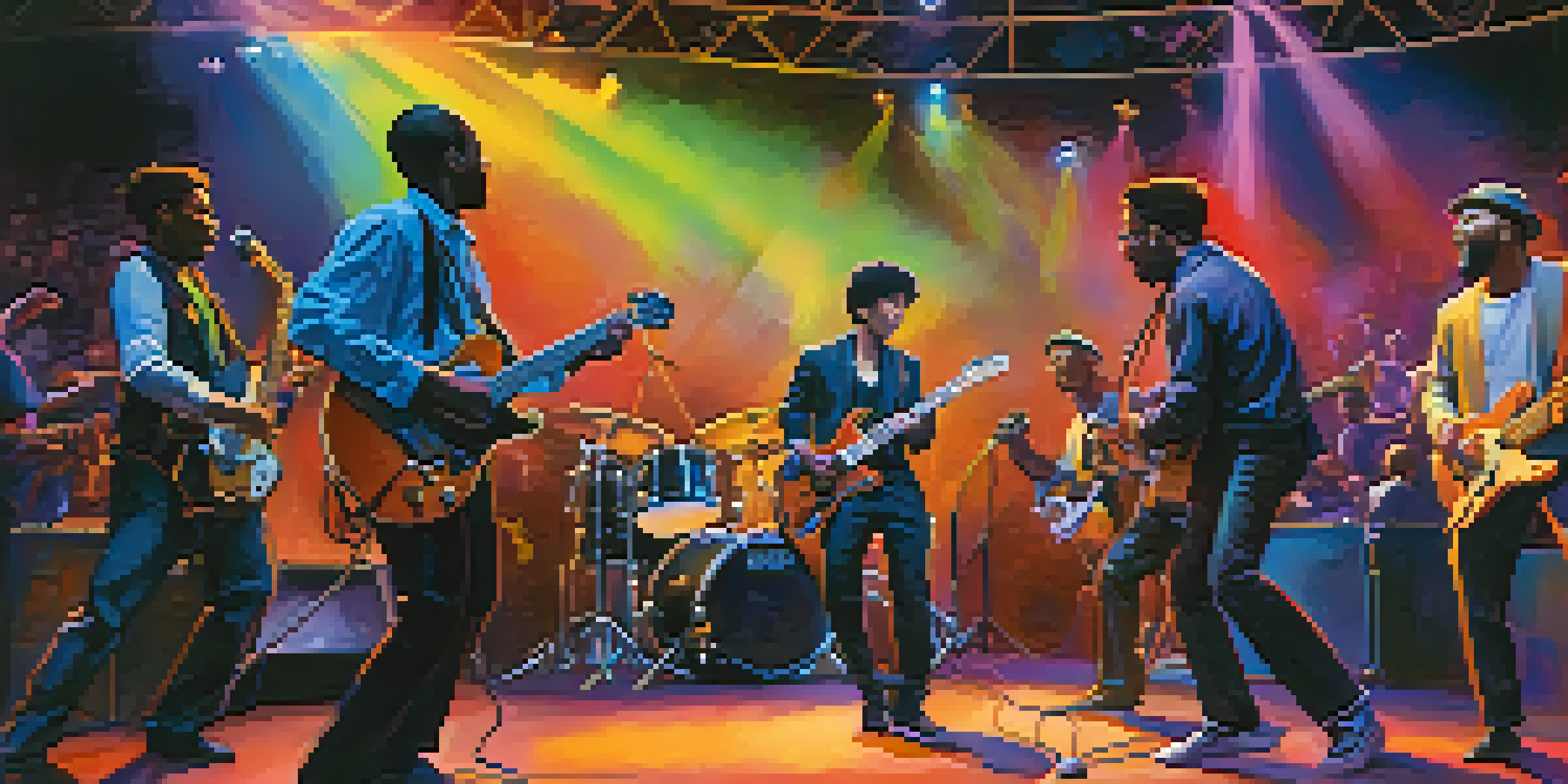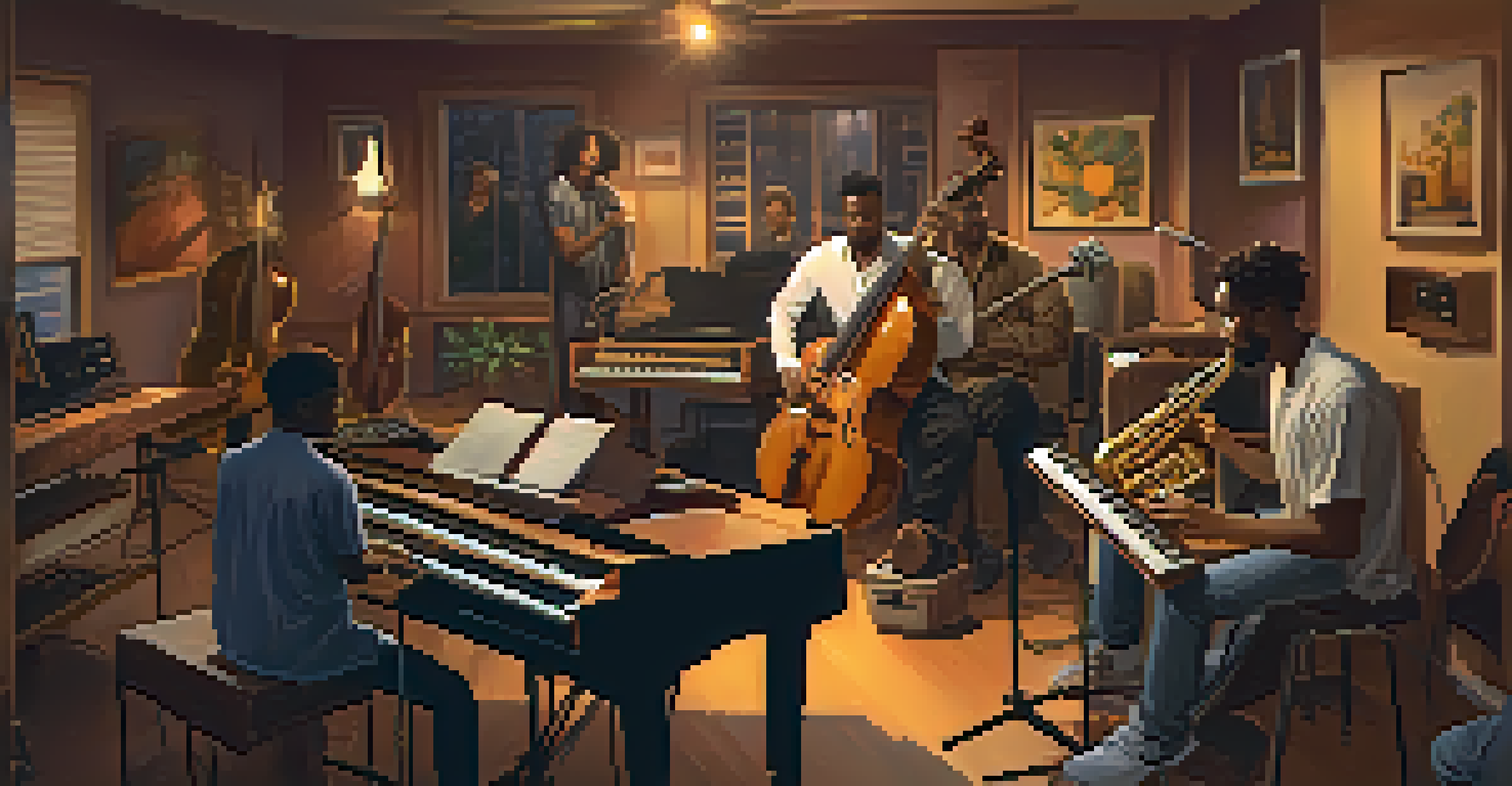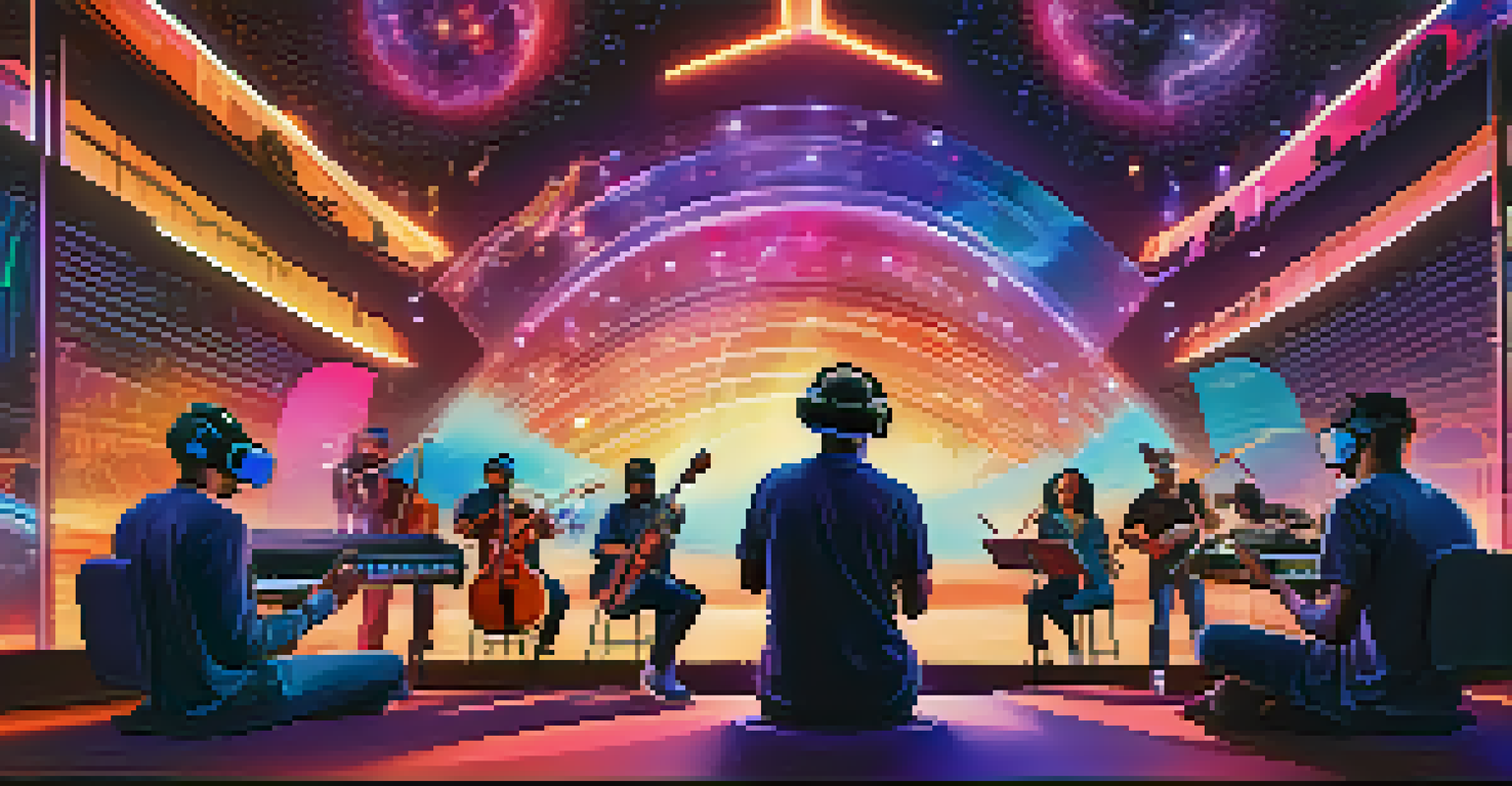Live Collaboration: Creating Music Together on Stage

What is Live Collaboration in Music?
Live collaboration in music involves musicians coming together to create and perform music in real-time. This dynamic approach allows for immediate feedback and spontaneous creativity, making each performance unique. Imagine a jazz band, where each musician listens and reacts to one another, resulting in an exhilarating flow of sound that can never be replicated.
Without a sense of cooperation, we have nothing but solitary confinement.
Unlike traditional music production, where artists often work in isolation, live collaboration fosters a sense of community. It encourages musicians to share ideas on the spot, leading to fresh interpretations and innovative sounds. This collaborative spirit can be witnessed in various genres, from rock to classical, as artists unite on stage.
Ultimately, live collaboration enhances the audience's experience as well. Fans can feel the energy and connection between the musicians, creating a memorable atmosphere. The unpredictability of live collaboration ensures that no two performances are ever the same, making it a thrilling aspect of music.
The Benefits of Live Collaboration
One of the standout benefits of live collaboration is the enhancement of creativity. When musicians share the stage, they inspire each other to push boundaries and explore new ideas. For instance, a guitarist might introduce a unique riff that sparks a drummer to change their rhythm, leading to an entirely new composition.

Moreover, live collaboration builds camaraderie among musicians. Working together in real-time fosters trust and respect, which can translate into stronger performances. This bond often results in an electrifying synergy, as artists feed off each other's energy and creativity.
Live Collaboration Enhances Creativity
Musicians inspire each other in real-time, leading to fresh interpretations and innovative sounds.
Additionally, live collaboration can lead to skill development. Musicians learn to adapt on the fly, developing their improvisation skills and becoming more versatile performers. This experience can be invaluable in their musical journey, as they gain confidence in their abilities and expand their musical horizons.
Tools That Facilitate Live Collaboration
In today’s digital age, various tools and technologies make live collaboration easier than ever. Software like Ableton Live or GarageBand allows musicians to experiment with sounds and record their ideas instantly. These platforms enable artists to share their creations in real-time, even if they are miles apart.
The best collaborations come from a place of trust, respect, and a shared vision.
Moreover, apps designed for musicians, such as JamKazam or Audiomovers, facilitate live jamming sessions over the internet. These tools help artists connect and collaborate, regardless of geographical barriers. This means that musicians can create music together from different parts of the world, expanding their creative possibilities.
Additionally, social media platforms play a crucial role in live collaboration. Artists can share their sessions, engage with audiences, and even invite fans to participate in their creative process. This interaction not only enriches the music but also builds a loyal community around the artists.
Iconic Examples of Live Collaboration
Throughout music history, there have been countless examples of powerful live collaborations. One notable instance is the legendary performance of 'The Band' with Bob Dylan at the 1969 Isle of Wight Festival, where the synergy between artists created a momentous experience for the audience. Their ability to improvise and connect in the moment is a testament to the magic of live collaboration.
Another iconic example is the collaborative efforts of the supergroup 'The Traveling Wilburys,' which brought together legends like George Harrison and Tom Petty. Their spontaneous songwriting sessions led to music that resonated with fans worldwide, showcasing the creative potential that emerges from collaboration.
Audience Energy Shapes Performances
The audience's reactions can influence musicians, creating a dynamic and engaging performance atmosphere.
These examples highlight how live collaboration can elevate performances and create unforgettable musical moments. The energy and chemistry between musicians not only captivate audiences but also leave a lasting impact on the music itself.
The Role of the Audience in Live Collaboration
The audience plays a pivotal role in live collaboration. Their reactions and energy can influence the musicians’ performance, often leading to unexpected changes in the setlist or improvisation. For example, a cheering crowd might inspire an artist to extend a song or explore a different direction altogether.
Additionally, audiences often contribute to the collaborative spirit by engaging with the performers. This interaction can manifest through call-and-response moments, where musicians invite the crowd to sing along or clap to the beat, creating a sense of unity. This dynamic connection enhances the overall experience for both artists and fans.
Ultimately, the relationship between musicians and their audience during live collaboration creates a unique atmosphere. The energy exchanged on stage can elevate the performance, making it a shared experience that lingers in the memories of everyone involved.
Challenges in Live Collaboration
While live collaboration offers numerous benefits, it also comes with its challenges. One significant hurdle is the need for effective communication among musicians. Misunderstandings can arise, especially when artists have different musical backgrounds or styles. Clear communication is vital to ensure everyone is on the same page during a performance.
Another challenge is the pressure of performing live. The spontaneous nature of collaboration can lead to mistakes or unexpected moments that may be difficult to navigate in front of an audience. However, many musicians view these challenges as opportunities for growth and learning, turning potential pitfalls into memorable experiences.
Technology Expands Collaboration Horizons
Advancements in digital tools and platforms are making it easier for artists to collaborate globally, transcending geographical barriers.
Despite these challenges, the rewards of live collaboration often outweigh the difficulties. Musicians who embrace the unpredictability of live performance can create something truly special, strengthening their skills and bond as artists along the way.
The Future of Live Collaboration in Music
As technology continues to evolve, the future of live collaboration in music looks promising. With advancements in virtual reality and augmented reality, musicians may soon be able to collaborate in immersive environments, transcending geographical limitations. Imagine a virtual stage where artists from different corners of the world perform together in real-time, creating an unprecedented musical experience.
Furthermore, the rise of online music communities is fostering a new generation of collaborations. Platforms like SoundCloud and Bandcamp allow artists to share their work and connect with fellow musicians, leading to exciting partnerships. This trend could reshape the music landscape, encouraging collaboration across genres and styles.

Ultimately, the spirit of live collaboration will continue to thrive, driven by the passion for creativity and connection among musicians. As artists embrace new technologies and platforms, the possibilities for collaboration will only expand, enriching the music industry and the experiences of audiences everywhere.